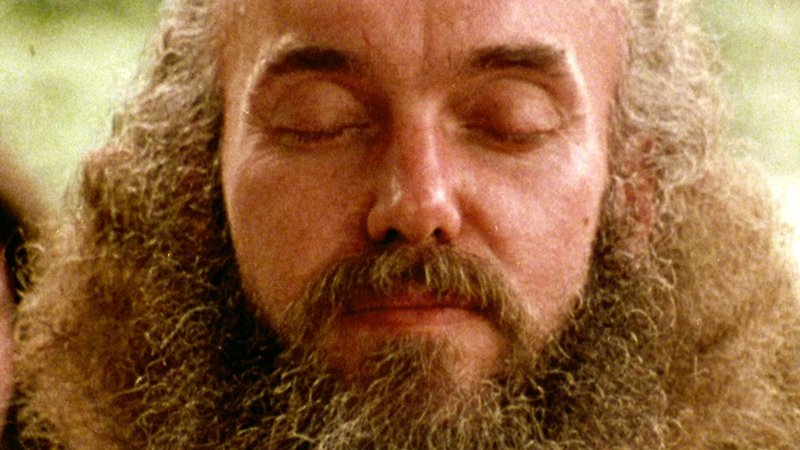
Screened as part of NZIFF 2002
Ram Dass Fierce Grace 2001
"I was not prepared to be as moved as I was by Mickey Lemle’s Ram Dass Fierce Grace, a cinematic study of the various transitions in the life of a self-proclaimed mystic from the West engulfed by the seemingly simple certitudes of the East, and the victim, in February 1997, of a life-threatening disabling stroke at the age of 65.
He was born Richard Alpert in Boston in 1931… In 1961, while at Harvard, Dr Alpert’s interests led him to collaborate with Timothy Leary, Ralph Metzner, Aldous Huxley, Allen Ginsberg and others, and to pursue intensive research with psilocybin, LSD-25 and other chemicals. Professors Alpert and Leary were dismissed from Harvard in 1963 because of the controversy aroused by their experiments in LSD.
Dr Alpert continued his research under the auspices of a private foundation until 1967. In that year he traveled to India, where he met his guru, the Maharajji Neem Karoli Baba, and was renamed Ram Dass. Over the years, Ram Dass expanded his studies on psychedelic research to include many political issues fostering an awareness of the natural and social environment. He wrote several books on his various obsessions; the most famous, Be Here Now, was published in 1971 and sold a million copies over 37 printings.
While Mr Lemle touches on these background facts, his film is about the Ram Dass who, having abandoned the up-and-down extremes of psychedelia and the fatalistic philosophy of Buddhism, has begun a steady ritualized concentration on the endless horizons of one’s love of God. Among the very first images of Ram Dass in the film are of a 65-year-old stroke victim actively engaged in a program of speech and physical therapy. His wit is still intact as he confronts the enforced silences imposed upon him by ‘the stroke,’ that now-inseparable part of his existence… Mortality was a much more fearsome prospect than he’d ever imagined. But he doesn’t abandon his vocation out of being momentarily deficient in spirituality; he simply declares that he has a lot of work to do on his soul. At this point, I found myself filled with admiration for a public figure I had previously chosen to dismiss in the years he was presuming to tell me how to live. Now he was demonstrating to me how to get old and how to face death, and his grace under pressure was truly and infinitely courageous." — Andrew Sarris, NY Observer